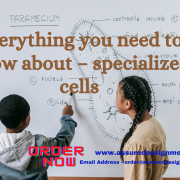Exam Name: Open-book Take Home Online Exam
Maximum Word Count: 2,000 words (approx. 500 words per question)
Anticipated writing time: TWO (2) HOURS
Special instructions for Candidates:
- This examination is OPEN BOOK.
- This examination is open for 24 HOURS. Within this period you can select when you complete the exam.
- This examination constitutes 40% of your assessment in this unit.
- This examination comprises 4 You are required to answer ALL 4 questions.
- Save your exam response on your computer using the file name: student ID, unit code and the unit name, for example: 216123123_MMK266_Consumer Behaviour
- Record all answers in the spaces provided below for each question and upload the .docx to the Exam Submission Dropbox on the CloudDeakin unit site.
- Late submissions will not be marked.
- Remember to save your work regularly.
- It is important that you complete this task individually. Your submission will be reviewed for the purposes of detecting collusion and/or plagiarism.
- If you encounter any technical issues with CloudDeakin, please contact the IT Service Desk online or via phone (1800 463 888; +61 5227 8888 if calling from outside Australia) and record your ticket number as evidence of technical issues during the examination period.
- In the unlikely event that you cannot upload your completed exam paper, email it as an attachment to the unit chair (mmk266@deakin.edu.au) within the submission time.
- The breakdown of marks in this exam is:
| Question | Marks |
| 1 | 30 |
| 2 | 40 |
| 3 | 20 |
| 4 | 10 |
| Total available marks: | 100 |
Exam Case Study
Background
Volatile Organic Compounds (VOCs) are gases that can be released from a wide variety of chemicals, including some paints, glues, varnishes, and cleaning products. VOCs are also released from products that are made with these chemicals, including many items of furniture and office equipment. Concentrations of VOCs are typically higher in indoor than outdoor environments, and exposure to VOCs has been linked to a range of short- and long-term health conditions, including allergies, aggravation of asthma symptoms, throat irritation, and even cancer. Moreover, VOCs are typically too small to be captured by many air purifiers, such as those with HEPA filters.
Product
Neoplants – a biotech startup – has developed the Neo P1, a bioengineered variant of golden pathos, a common indoor plant. The Neo P1 has been designed to capture and safely recycle four of the most dangerous VOCs commonly found in indoor environments: formaldehyde, benzene, toluene, and xylene.
Product design
According to Neoplants, the Neo P1 is 30 times more effective at removing the four target VOCs (formaldehyde, benzene, toluene, xylene) than regular plants. To enhance VOC removal, the Neo P1 also comes with a special soil containing harmless bacteria and fungi that have been bioengineered to turn VOCs into safe compounds, such as sugar and amino acids. Each month, owners are encouraged to add specialised Power Drops to the soil to replenish the bacteria and fungi needed to maximise VOC removal.
The Neo P1 is sold in a specialised container that:
- Is designed to maximise airflow around the plant, allowing it to more effectively remove VOCs from the surrounding air.
- Features an internal water tank with inbuilt water level indicator to make it easier for owners to maintain the plant. The internal water tank means that the Neo P1 only needs to be watered every 2 – 3 weeks.
- Is made from a mix of polylactic acid and flax, which reduces fossil fuel use by 20 – 50% relative to conventional plastics.
For every Neo P1 sold, Neoplants will invest a minimum of US$20 in further research and development aimed at using their bioengineering efforts to address climate change.
Product positioning
The Neo P1 is targeted at consumers interested in health, wellness, and interior design.
Product pricing
Each plant is priced at US$179 (approx. AU$270). The cost of the Power Drops has not yet been announced.
Question 1.
Part A – 20 marks
There are a set of innovation characteristics that influence consumers’ adoption intention. Drawing on the information presented in the exam case study, evaluate how the Neo P1 rates against each of these characteristics compared to a traditional indoor plant. Use this evaluation to determine which characteristic(s) of the Neo P1 may enhance consumer adoption intention. In your answer, also outline which characteristics might limit consumers’ adoption intention.
Please type your answer below.
Part B – 10 marks
Design a strategy aimed at increasing consumers’ adoption intention with respect to the Neo P1. In your answer, be sure to justify how and why this strategy will address the characteristic(s) you identified in your response to Question 1 Part A.
Please type your answer below.
Question 2.
Background
David Jones is an upmarket Australian retailer. David Jones wants to stock more indoor plants to increase their relevance among millennials, many of whom are keen to grow plants in their living spaces. In line with this strategy, David Jones has negotiated exclusive Australian retail rights for the Neo P1 and want to feature it in their next product catalogue.
An example of a David Jones catalogue is presented in Appendix A.
| Part A – 20 marks
Use your knowledge of heuristics, motivational direction, and motivational drive to design a feature product display for Neo P1 to appear in the David Jones catalogue. To design your feature, please follow these steps: 1. Choose ONE of the images in Appendix B. Each image is the same size as the feature product display, so the image you select will form the background to your feature product display. 2. Create your feature product display in Appendix B (rather than pasting the image here). 3. To create your feature product display, reposition and write in the text box sitting on top of the Appendix B image you have selected. You may copy and paste this text box to create more blocks of text as needed. Be careful with where you position the text box(es) – you don’t want text covering key parts of the image! 4. You may paste other images/logos onto your feature product display if you wish, but this is not mandatory and should only be done sparingly. 5. Once you have created your feature product display, delete the other images in Appendix B so that the markers can easily identify which image you have selected for your ad. You will be marked on how well your feature product display utilises heuristics, motivational direction, and motivational drive, as well as how well your text complements your chosen image. |
| Part B – 20 marks
Justify the various components you incorporated into the feature product display you created as part of Question 2 Part A, including: – The heuristic(s) you used. – How you activated motivational direction and motivational drive. – The image(s) you selected. – Any other product information you featured. – Any other marketing technique(s) you used. |
Please type your answer below.
Question 3.
Background
The Neo P1 has a high price point (approx. AU$270) compared to non-bioengineered golden pothos plants, which can sell at Bunnings for AU$6 – AU$25 depending on their size.
Marketing strategy and justification – 20 marks
Develop a strategy that could be introduced to reduce the likelihood that buyers of the Neo P1 will experience post-purchase regret. As part of your answer, explain how and why this strategy will reduce the likelihood that consumers will experience post-purchase regret.
Please type your answer below.
Question 4.
Background
Independent research on non-bioengineered plants has found that 10 – 1,000 plants per m2 of floor space (about the space you have around a chair) would be required to remove VOCs from an indoor environment (Cummings & Waring, 2020). If these values were applied to Neoplants’ claim that the Neo P1 removes 30 times the VOCs of regular plants, then around 0.3 – 33.3 Neo P1 plants per m2 of floor space would be needed to remove VOCs from an indoor space. For a living room with 25 m2 of floor space, this would mean purchasing 8 – 833 Neo P1 plants at an upfront cost of between AU$2,160 and AU$224,910, although costs would be significantly lower if cuttings from one plant were used to make new plants.
Neoplants’ website doesn’t mention these figures. Instead, the website claims that the Neo P1 is “The first and only plant built to purify the air in your home.” They also use the tagline “Fighting air pollution. One home at a time.” and claim that the Neo P1 is “Good for the world, gorgeous for your home. This is a superplant with superpowers.”
In media interviews, the company is more cautious. Lionel Mora, one of Neoplant’s co-founders, mentioned in an interview with Wired that the Neo P1 “will be the first time in history that such a product exists…The first computers, they weren’t so great. But they were revolutionary.”
An online exchange between a user of the Y Combinator message board and the Chief Technical Officer (CTO) of Neoplants also alludes to the fact that learnings from developing the Neo P1 – alongside associated sales revenue – will be used to support the development of new, more impactful bioengineered plants. Note that the exchange has been edited for length and clarity:
User: “I would love to see some numbers and comparisons. As I said in a reply below, I suspect this is functionally ineffectual and that 30x the air cleaning of a regular plant is like saying 30x the intelligence of a regular plant. I suspect this is functioning as a shiny, attractive prototype to fund further research to develop a 300x or 3000x plant or something in that neighbourhood. No judgment from me for that, prototype funding a bigger plan is a cool business model. I’d just love to get some absolute data.”
Reply: “Patrick here, CTO of Neoplants, thanks you so much for spending the time learning about what we’ve built…Even though our first product, Neo P1, is “only” 30x better than normal indoor plants, it’s already a great improvement over anything that’s been done in the scientific literature to date (usually improving phytoremediation by 2 or 3x), and this is just the start of the adventure. As you said, we expect to continue to leverage our metabolism and microbiome engineering technologies to have even more performant [sic] plants every year.”
Indeed, in other public commentary, such as in their Wired interview, representatives from Neoplants have spoken of using bioengineering to develop new plant variants that address other pressing societal needs, such as enhanced rates of carbon capture and absorbing toxins in contaminated environments. Neoplants also invests $20 from the sale of each Neo P1 to fund further research and development aimed at addressing climate change.
| Ethical analysis – 10 marks
Drawing on the material outlined in the background to this question, describe the ethical tension associated with Neoplants’ current claims and future aspirations. As part of your answer, outline a strategy for how you would seek to address this tension. |
Please type your answer below.











